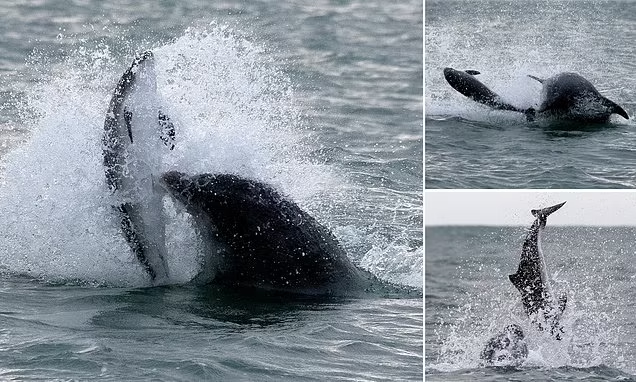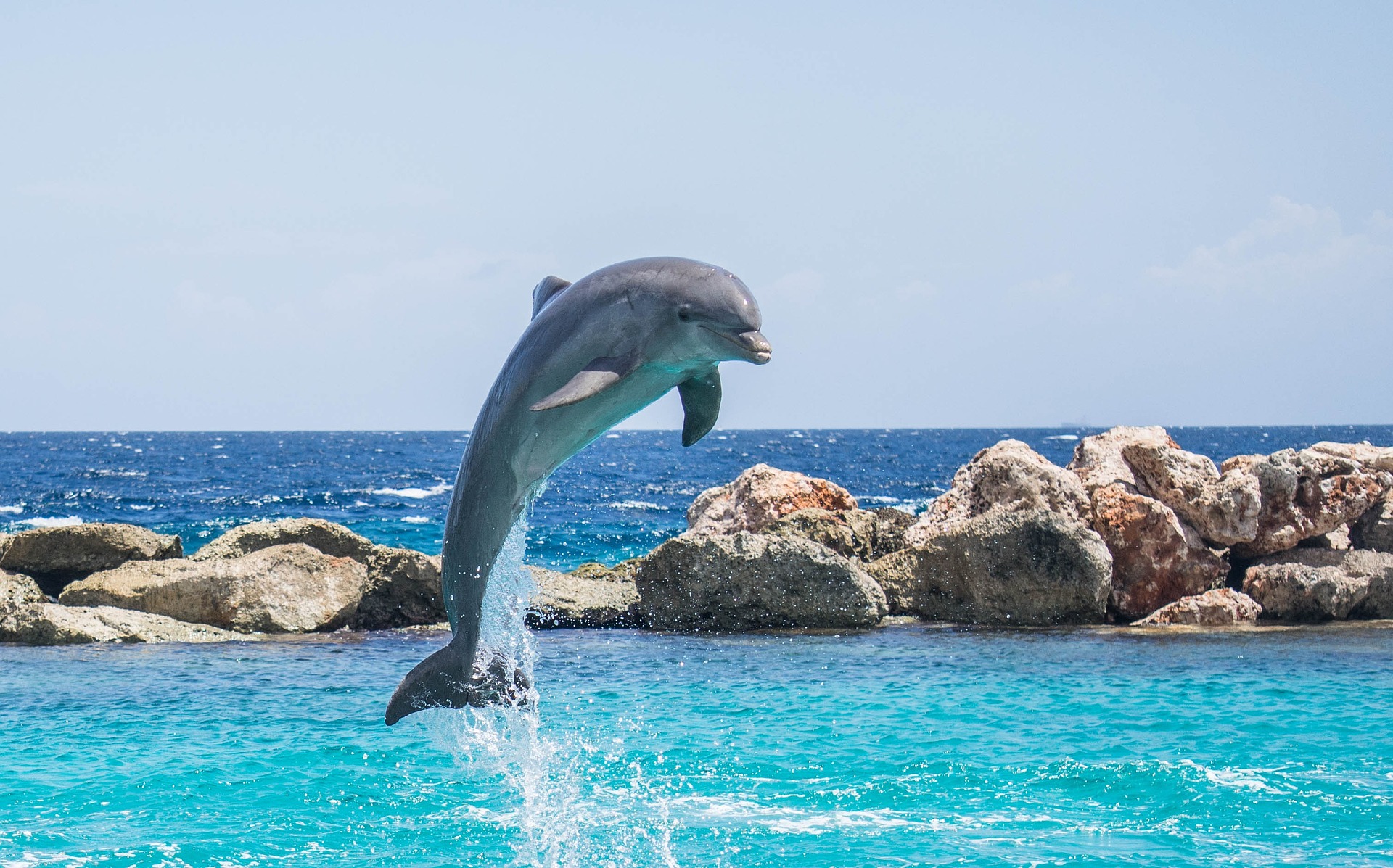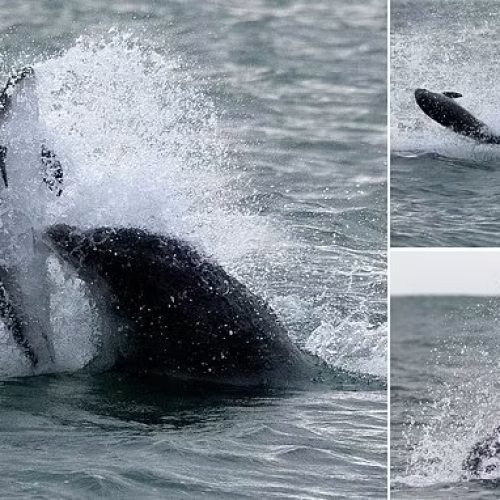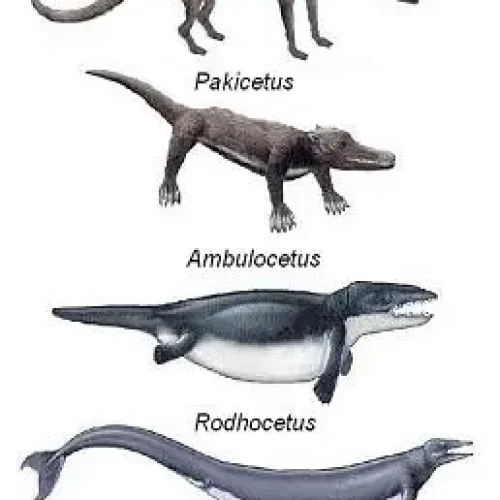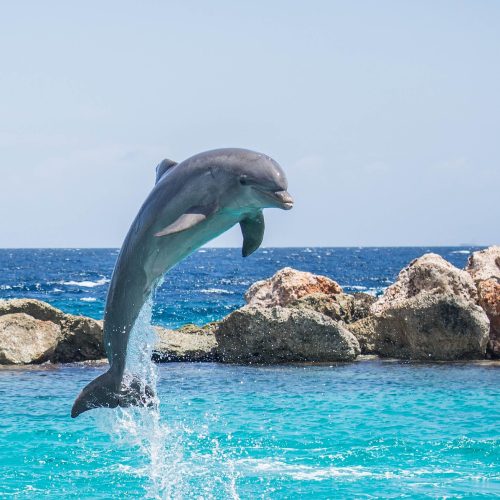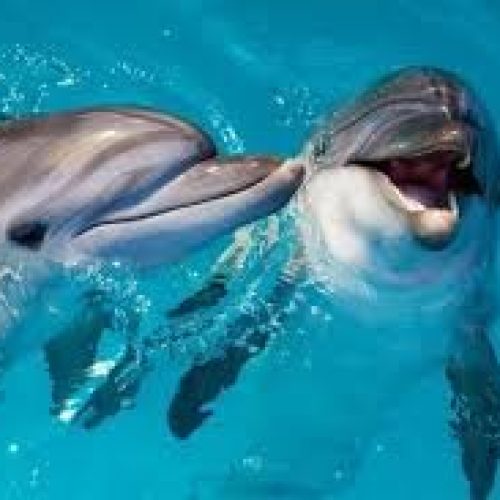In this article
THE CENTENARIANS OF THE SEA: UNRAVELING DOLPHIN LONGEVITY
In controlled environments, we’ve had the opportunity to track dolphin lifespans with precision.
The most famous long-lived dolphin in captivity was Nellie, a bottlenose dolphin who called Marineland of Florida home for an astonishing 61 years.
Born in 1953, Nellie surpassed the average lifespan of wild bottlenose dolphins by decades, showcasing the potential for extended life under human care.
Another noteworthy example is Nana, a dolphin at Dolphin Base in Taiji, Japan, who lived to be 47 years old.
These cases demonstrate that with proper care and protection from natural predators, dolphins can far exceed their expected lifespans in the wild.
“The oldest known wild dolphin, a female bottlenose named Nicklo, was estimated to be at least 67 years old when last sighted off the coast of Florida in 2017.”
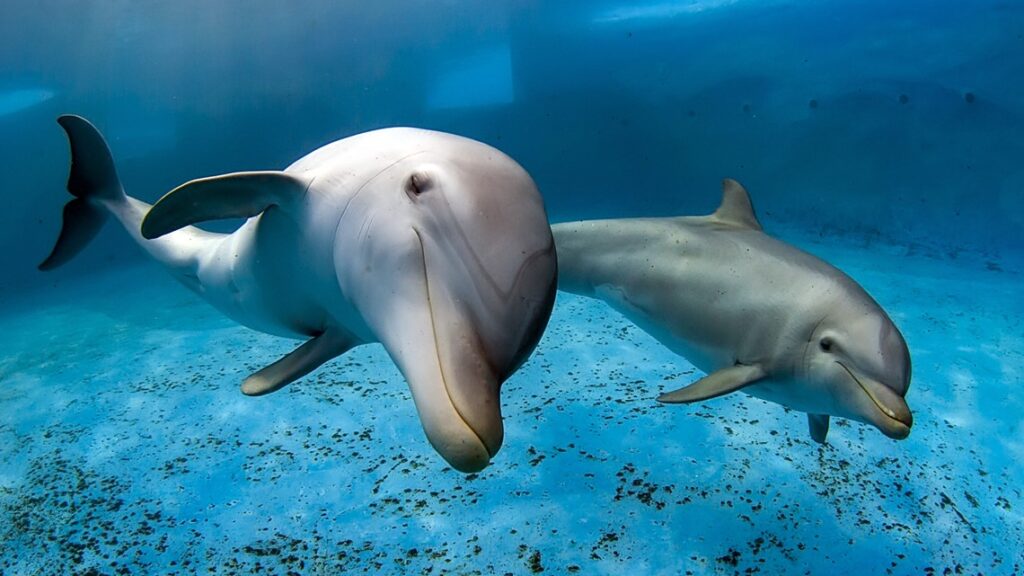
Wild wonders: estimating age in natural habitats
Determining the age of wild dolphins presents a unique challenge for marine biologists. Unlike terrestrial mammals, dolphins don’t leave behind easily observable markers of their age.
However, researchers have developed innovative techniques to estimate dolphin ages in their natural habitats:
• Growth layer groups in teeth: Scientists analyze the layers in dolphin teeth, similar to tree rings, to estimate age.
• Genetic markers: DNA analysis can provide clues about a dolphin’s age based on telomere length and epigenetic changes.
• Photo-identification: Long-term studies tracking individual dolphins through distinctive markings help establish minimum known ages.
Using these methods, researchers have documented wild dolphins living into their 50s.
The oldest known wild dolphin, a female bottlenose named Nicklo, was estimated to be at least 67 years old when last sighted off the coast of Florida in 2017.
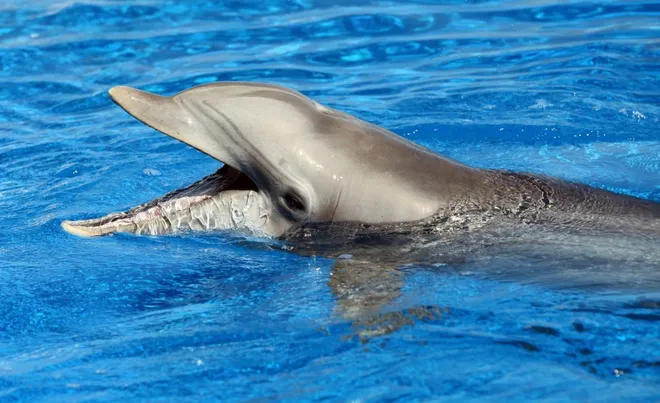
Longevity factors: what keeps dolphins swimming
Several factors contribute to the impressive lifespans of dolphins:
1. Social structure: Dolphins live in complex social groups, providing protection and support throughout their lives.
2. Intelligence: Their cognitive abilities allow them to adapt to changing environments and avoid dangers.
3. Efficient metabolism: Dolphins have evolved to conserve energy efficiently, potentially slowing the aging process.
4. Low predation pressure: Adult dolphins face few natural predators, increasing their chances of survival.
5. Calorie restriction: In some cases, managed feeding in captivity may contribute to extended lifespans.
Research conducted by the National Marine Mammal Foundation suggests that dolphins may have unique genetic adaptations that protect against age-related diseases.
A 2015 study published in the journal “Proceedings of the Royal Society B” found that older dolphins showed gene expression patterns associated with stress resistance and longevity.
While these factors contribute to dolphin longevity, it’s important to note that human activities such as pollution, habitat destruction, and climate change pose significant threats to wild dolphin populations.
Conservation efforts are crucial to ensure these remarkable creatures continue to grace our oceans for generations to come.
BREAKING RECORDS: THE LONGEST-LIVED DOLPHIN SPECIES
Bottlenose dolphins: the well-studied long-livers
Bottlenose dolphins, the charismatic stars of many marine parks, boast impressive lifespans in the wild.
These intelligent creatures typically live between 20 to 30 years, but some individuals have been known to surpass the half-century mark.
In 2017, a wild bottlenose dolphin named Nicklo was estimated to be at least 67 years old when last spotted off the coast of Florida.
What contributes to their longevity?
• Advanced social structures that provide support and protection
• Efficient metabolisms adapted to marine environments
• Relatively low predation pressure in many habitats
These factors combine to give bottlenose dolphins a fighting chance at a long life, much like how a well-maintained automatic watch can keep ticking for decades with proper care.
Orcas: the ocean’s centenarian predators
When it comes to dolphin longevity, orcas (killer whales) take the crown. These apex predators of the sea have astounded researchers with their potential to live well beyond a century.
The oldest known orca, affectionately named “Granny” or J2, was estimated to be 105 years old at the time of her last sighting in 2016.
Key factors in orca longevity:
• Matrilineal social structure providing generational knowledge transfer
• Absence of natural predators
• Diverse diet and hunting strategies
Orcas’ lifespans mirror the durability of high-end mechanical watches. Just as a Patek Philippe can be passed down through generations, orca pods pass down crucial survival knowledge across decades.
Surprising longevity in smaller dolphin species
While larger dolphin species often grab headlines for their longevity, smaller species also demonstrate impressive lifespans.
The Commerson’s dolphin, for instance, despite its diminutive size (1.5 meters long), can live up to 18 years in the wild.
This is comparable to the lifespan of many quality quartz watches, which can faithfully serve their owners for decades with minimal maintenance.
Another notable long-liver is the Risso’s dolphin. These distinctive grey cetaceans with scarred bodies can live up to 35 years, defying expectations based on their size. Their longevity echoes the enduring appeal of classic watch designs that remain stylish and functional for decades.
Understanding dolphin longevity not only satisfies our curiosity but also provides valuable insights into marine ecosystem health and evolution.
FROM BIRTH TO OLD AGE: THE DOLPHIN LIFE CYCLE
Dolphins, those charismatic marine mammals, captivate us with their intelligence and playful nature. But have you ever wondered about their journey from birth to old age?
Dolphin calves: early life and development
A new dolphin’s life begins with a splash. After a gestation period of about 12 months, depending on the species, a mother dolphin gives birth to a single calf.
This momentous event typically occurs in warm, shallow waters, providing a safe environment for the newborn.
Dolphin calves are born tail-first, a crucial adaptation that prevents drowning during delivery.
These babies are no small fry – they can measure up to a third of their mother’s length. For instance, a bottlenose dolphin calf might be around 1 meter long at birth.
From day one, dolphin calves display remarkable abilities:
• They can swim and surface to breathe within moments of birth
• Calves begin nursing almost immediately, drinking nutrient-rich milk
• They stay close to their mothers, often swimming in her “slipstream” to conserve energy
The first few years of a dolphin’s life are critical. Calves typically nurse for 18 to 24 months, gradually transitioning to solid food.
During this time, they learn essential skills like echolocation, hunting techniques, and social behaviors from their mothers and pod members.
Adulthood and reproduction: the prime of dolphin life
As dolphins mature, they enter the prime of their lives. Most species reach sexual maturity between 5 and 15 years of age, with females typically maturing earlier than males.
This period is marked by increased independence, social bonding, and the potential for reproduction.
Adulthood brings new challenges and opportunities:
• Dolphins form complex social structures, with some species living in pods of up to 1,000 individuals
• They engage in elaborate courtship rituals, which can involve acrobatic displays and vocalizations
• Females usually give birth every 2 to 4 years, investing significant time and energy in raising each calf
It’s worth noting that not all dolphin species share the same life history.
The Orca, or killer whale (which is actually the largest member of the dolphin family), has a particularly long reproductive period.
Female Orcas can continue to calve well into their 40s, showcasing the remarkable longevity of some dolphin species.
Aging gracefully: how dolphins adapt to their golden years
As dolphins enter their later years, they face new challenges but continue to play vital roles in their pods. While the lifespan varies greatly among species, some dolphins can live for several decades in the wild.
The bottlenose dolphin, one of the best-studied species, typically lives for 20 to 30 years in the wild. However, some individuals have been known to reach 50 years or more.
The oldest known dolphin in human care was a female bottlenose named Nellie, who lived to the impressive age of 61 at Marineland of Florida.
Aging dolphins show remarkable resilience:
• They may slow down physically but often compensate with increased experience and social status
• Older females, particularly in Orca pods, become important leaders and repositories of ecological knowledge
• Some species show age-related changes in behavior, such as forming closer bonds with relatives
Research suggests that dolphins may have evolved mechanisms to resist some effects of aging.
A 2018 study published in the journal “Proceedings of the Royal Society B” found that bottlenose dolphins show limited signs of age-related muscle deterioration, potentially due to their constant swimming activity.
From playful calves to wise elders, dolphins navigate the cycles of life with grace and adaptability.
Their long lifespans and complex social structures offer fascinating insights into marine mammal biology and behavior.

